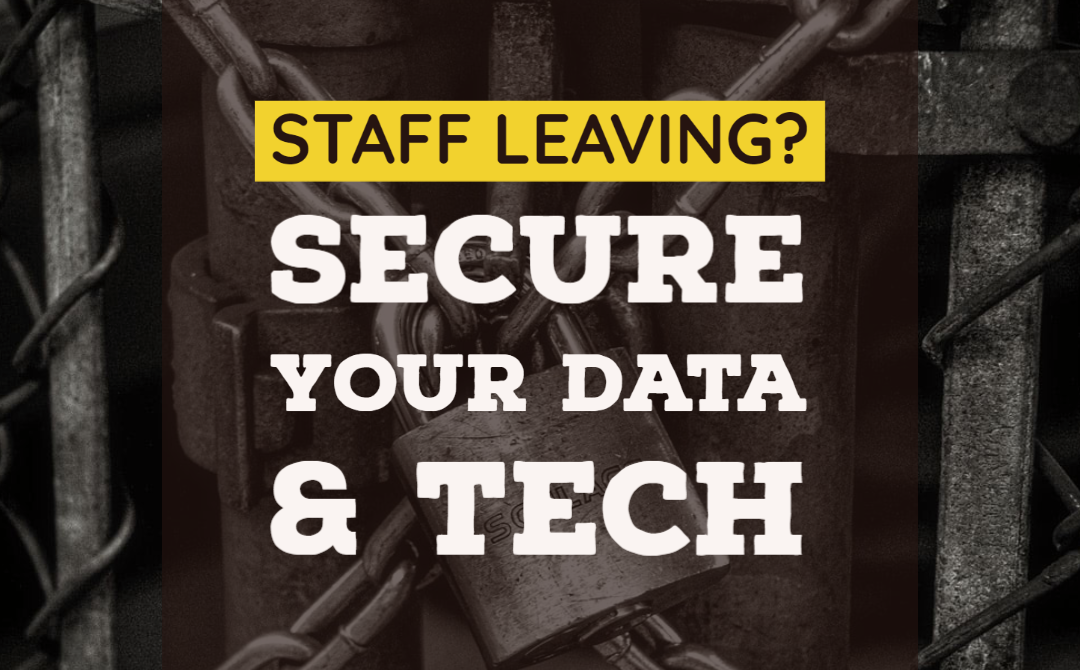
Mar 23, 2022 | HR
It’s almost April, and the time for some key changes to Employment Law. Our team have put together the top 4 things you need to know to help ensure your company stays on top of the new rules.
4 Key Employment Law Changes
Increase in Minimum Wage – 1st April
Whilst April brings new minimum wage increases, there are also rises in other statutory rates. There is a focus on improving family friendly leave rates. Maternity, paternity, adoption and parental bereavement leave are all changing. These rates will increase from £152.97 to £156.66 per week.
Sick pay is all rising from £96.35 to £99.35 per week.
National minimum wage rates will be –
- National Living Wage – £9.50
- 21-22 Year Old Rate – £9.18
- 18 – 20 Year Old Rate – £6.83
- 16 – 17 Year Old Rate – £4.81
- Apprentice Rate – £4.81
Gender Pay Gap Reporting
The deadline for publishing your gender pay gap report is imminent! The deadline for private and voluntary sector employers is 4th April 2022. This report will need to be on your website and on the gender pay gap reporting portal on gov.uk
But you don’t just have to provide the figures. The gender pay gap report also give you the opportunity to provide any details around the gender pay gaps, if you have any. You can provide and explanation and can even include what measures you are taking to reduce the gap. As documents such as this are likely to form part of the decision-making process when hiring, it’s important that it shows you in a good light. Whilst candidates will appreciate that gaps do exist, if you are making proactive steps to reduce this, that could help attract a more diverse workforce.

IR35 ‘Grace Period’
IR35 came into force in April 2021. However, HMRC has taken a light touch to any enforcement notices in what is being called a ‘grace period’. The important thing to know is that this comes to an end on 6th April. Under the new rules, it is the responsibility of the organisation employing the contractor to determine their employment status. Therefore, it’s a great time to review your IR35 compliance and get your status determinations updated if necessary.
If you employ contractors and need help to secure the very best IT talent, we can help. We have a fantastic pool of contractors ready for work. Get in touch with our team to find out what we could do for you.
Employment Law Changes to Flexible Working
Just 2 years ago the way we worked changed practically overnight. Most companies required staff to work from home full time. But as we return to normal and the return to the office now fully underway, it’s important to know the changes to flexible working. Although, it’s important to note that there isn’t yet a fixed date for this to happen.
The current government guidance is to ‘work from where you can’. And in a view to modernise the day we work; they have proposed a change that will impact every company. The proposed plan is to make it possible for employees to request a flexible work pattern from day one. There’s also discussion around the number of requests and employee can make, and the time you should take to respond.
About Langley James
Established in 1999 we connect the right people to the right opportunities across all types and sizes of organisations throughout the UK. Our extensive Network of IT Professionals puts us ahead of the competition. Next time you’re recruiting into your IT team, whether contract or permanent, we’d love the opportunity to help you to recruit someone worth recruiting.
Apr 26, 2021 | HR, Uncategorised
LANGLEY JAMES AND THE INSTITUTE OF GOVERNMENT & PUBLIC POLICY EVENT 27th APRIL 2021 8.45-16.00.
Langley James are proud to announce their contribution to the forthcoming event in conjunction with the Institute of Government and Public Policy to address Transforming Justice through Technology 2021. The event takes place on Tuesday 27th April 2021 from 8.45-4pm Click here for details of the event.
The Government has ambitions to deliver digital justice and high-quality rehabilitation programmes to protect the public and swiftly and accurately dispense justice. For this to be achieved, a criminal justice service that is responsive, flexible, transparent, and just and puts those whom it serves at the heart of it all, is a must. This needs to include a vision of a criminal justice system that embraces the use of modern technology.
Technology and data are the backbone of delivering an outcomes-focused system. A digital platform where the right people can securely access and share information at critical moments can integrate organisations and foster joint approaches to justice that support the user.
As individuals move from police right through to probation, secure access to technology and data can deliver the right services for users, enhance efficiencies, and transform rehabilitation outcomes. Used accordingly, technology has the power to deliver a first-class criminal justice system fit for the modern age.
Alongside this, the advancement in the use of technology needs to be matched by a look again at the culture of our criminal justice service and a re-commitment to seeing that those who provide much of the input, victims, and witnesses, are also recognised as those on whom the outcomes often depend.
8.45 am Online Registration
9.30am Chair’s Welcome Address Nick Sloan, Adviser, National Digital Public Contact Change Programme
9.40am Keynote Address: Delivering Digital Transformation
- Fixing the basics
- Making things more efficient
- Whole system thinking ,end-to-end service and policy design
- Building diverse, inclusive, brilliant teams
10.00 am Gina Gill, Interim Chief Digital and Information Officer Ministry of Justice
10.35 am Special Keynote Session
Sophie Otter, Deputy Director Digital Prison Services & Mark Stanley, Deputy Director – Digital Probation, Ministry of Justice Digital
An Introduction Into Data Within the Ministry of Justice
- How we can use digital services to improve our data
- How we can use technology to better access our data
- How we can use data science to better utilise our data to inform decisions
10.55 am Adrian Richards, Director of Data and Analytical Services, Ministry of Justice
Questions And Answers Session
11:20am Networking Break
11:40am Special Keynote: Delivering Successful National ICT Capabilities To Policing and Other Law Enforcement Bodies
- Leveraging digital technologies, platforms, and techniques in order to deliver a profound impact for customers and their ability to protect communities.
- Getting the best out of programmes and organisations by putting people and the customer at the heart of what you do
- Defining and implementing an organisational technology strategy
- Ensuring Home Office information is safe & secure.
12.00pm Michael Hill, Director of Police & Public Protection Technology (PPPT), Home Office
12.20pm Kieran Delaney, Client Services Director, Langley James
Digital Transformation: Prioritising the Needs of the Business and the People Who’ll Meet Them
- A look at the lessons learned and wisdom gained from the failures and successes of digital transformation.
- The critical importance of Soft Skills – Ensuring any technical expertise brought in fits well with the company vision, structure, culture and social needs.
- How to stop tech from leading the conversation: Understanding technology and how it can benefit the enterprise architecture of an organisation, and exploring new technology driven by need.
12. 30 pm Corporate Case Study: The Future of Justice: Digital collaboration platforms powered by Benign Artificial Intelligence (AI) Chris Horton, Meganexus
- More engagement with the service users is key to
- Reduce reoffending.
- Better rehabilitation
- Better understanding of what service users’ needs and wants.
- How benign AI can help empower service users and give professionals a better understanding of service users.
- Digital collaboration platforms enable data collection throughout the journey of the service user.
- More data about service users enable better understanding and better-informed decision making.
12.40pm Questions and Answers Session
1.00pm Lunch and Networking
1:40pm Afternoon Keynote: The Future of Parole Board
- Putting the victim at the centre of everything through the better use of information
- Enabling parole decisions to be challenged by victim or prisoner alike.
- Creating an openness and transparency on what the Parole Board does through a range of digital channels.
- Building better collaboration between the Parole Board and its partners through better information sharing
- Understanding the role of the Parole Board in a post-Covid world
2:00pm Martin Jones, CEO, The Parole Board for England & Wales
2:10pm Questions and Answers Session
2.20pm Case Study: Transform Your Digital Investigations with Increased Speed, Accuracy, And Transparency Marc Lees, Magnet
- Digital Investigation Suite: A tool for law enforcement agencies and the justice sector to meet the challenge of ever-increasing data volumes and complexity from seized devices.
- A brief history of digital forensics to better understand the need for more collaborative, technology-driven solutions.
- New approaches using automated processing and centralised evidence review, plus drawing insights and lessons learnt from the innovators in this space who have recognised the need to work differently.
- Facing challenges and the opportunities around digital intelligence and the breadth and depth of the change required through investment and collaboration.
2:40pm Questions and Answers Session
2:50pm Consultation
3:50pm Chair’s Closing Address
Who Should Attend?
The Transforming Criminal Justice Through Technology 2021 event brings together senior leaders in courts, prisons, police, central government, probation services, academia, industry, and all those involved in the criminal justice sector to hear the latest policy updates and developments across the sector and address the challenges facing everyone in these unprecedented times.
Learning Outcomes
- Deliver digital justice and high-quality rehabilitation programmes to protect the public and swiftly and accurately dispense justice.
- Using data and technology to transform criminal-justice services.
- Ensure that data could feed cutting-edge technologies to help police forces collect and share evidence,
- Enable courts to make more efficient use of time.
- Provide prisons and probation providers with the tools to tailor rehabilitation.
Benefits
- Meet other like-minded professionals and develop new, beneficial connections.
- Through the learning opportunities and sharing of best practice, you will be able to implement improvements in your organisation
- Hear of leading and cutting-edge solutions from reputable providers.
- Impact the wider agenda and be part of future planning.
- Learn how to make the best use of key products and services that can help transform the Criminal Justice Sector
- Maximise the potential of cutting-edge technologies to support users ongoing requirements.
- Be part of organisations that continue to evolve, improve, and innovate.
If you have any questions regarding the event, please contact info@igpp.org.uk

Apr 28, 2020 | HR, Management
Declines in consumer confidence and decreased sales can threaten all businesses, but small businesses can be particularly vulnerable. They often don’t have reserves to help them weather difficult times. From protecting your cash flow to building your customer base, implementing a few practices in advance can help recession-proof your business so it survives and even thrives during economic downturns.
Protect Your Cash Flow
Cash flow is the lifeblood of your business. Money must continue inflowing and outflowing for optimum business health, with the obvious goal being that you bring in more income than you must spend on expenses. You’ll have expenses as long as your business exists.
Note: Admittedly, it can be hard to keep the cash flowing in. Recession-proof your business by implementing strategies to keep the cash flow moving, from increasing sales or billable services to trimming unnecessary expenses.
Review Inventory Management
See if anything can be done to reduce your inventory costs without sacrificing the quality of goods sold or inconveniencing your customers. Maybe you’re ordering too many of particular items, or something can be sourced somewhere else at a better price. Is there a drop-shipping alternative that will work for you so you can eliminate shipping and warehousing costs?
Note: Just because you’ve always ordered something from a particular supplier or done things in a particular way doesn’t mean that you have to keep doing things that way, especially when other ways can save you money.
Focus on Core Competencies
Small business owners often simplify the concept of “diversification,” translating it to simply “different.”
Simply adding other products or services to your offerings isn’t diversification. At best, it’s a waste of time and money. Worse, it can damage your core business by taking your time and your money away from what you do best, damaging your brand and reputation.
Note: Drop the extras and focus on what you do best that’s most profitable.
Win the Competition’s Customers
You must continue to expand your customer/client base if your small business is going to prosper in tough times. This means drawing customers from your competition.
Offer something more or different than what the other guy does. Research your competition and see what you can do to entice their customers into becoming your customers. How are your competitors advertising? Visit their business locations. Ask consumers what they like or don’t like about those companies, then tweak your own business practices accordingly.
Make the Most of Current Customers
We’ve all heard the old adage that a bird in the hand is worth two in the bush. The bird in the hand is your customer or client, and they’re an opportunity to make more sales without incurring the costs of finding new customers.
Even better, they might be loyal customers, giving you many more sales opportunities. You can’t afford to ignore the potential profits of shifting your sales focus to include established customers if you want to recession-proof your business.
The key here is excellent customer service. Ensure that your customers or clients love what you do or sell, and keep them happy. Yes, that means the customer is always right. Identify their needs, then meet them. You want to retain their business all costs. This is more important during a recession than at any other time.2
Don’t Cut Back on Marketing
Many small businesses make the mistake of cutting their marketing budget to the bone in lean times, or even eliminating it entirely, but this is exactly when your small business needs marketing the most.
Consumers are restless. They’re always looking to make changes in their buying decisions. Help them find your products and services and to choose them rather than others by getting your name out there. Don’t quit marketing. Step up your marketing efforts.
Watch Your Credit Scores
Hard times make it harder to borrow, and small business loans are often among the first to feel the squeeze, particularly for businesses with iffy credit ratings. Monitor yours frequently and keep on top of them. There are three major business credit bureaus and each assesses your business’s creditworthiness differently:
– Experian
– Equifax
– Dunn & Bradstreet3
Note: Keep tabs on your personal credit rating as well and do whatever is necessary to keep both in good shape.
You’ll stand a much better chance of being able to borrow the money you need to keep your business afloat if you have good personal credit as well. And keep in mind that the U.S. Small Business Administration makes easy-qualifying loans available during times of national economic crisis, in addition to its usual funding programs.
The Bottom Line
Nothing will make your small business 100% recession-proof, but implementing these can help ensure that your business survives tough times and possibly even profits from them. It all begins with analyzing how you’re doing things now and looking for ways to improve.
Source: The Balance

Apr 28, 2020 | HR, Management
86% of people working from home in the US, Canada, and the UK don’t think it’s time to head back, according to a new survey.
The coronavirus pandemic has officially transformed the workplace, as many governments and companies shifted employees to working from home during the global health crisis. According to a recent survey by Gartner, more than half of organisations surveyed said that at least 81% of their employees are working remotely during COVID-19—and even after the crisis subsides, working from home may be here to stay.
Still, the economic toll of the pandemic, and its disruptions to daily life, are causing many to consider how—and when––companies can bring employees back to the office. President Trump, for instance, recently tweeted that he is focusing on “getting America back to work.”
Still, the uncertainty of the situation and the broad lack of testing are cause for concern for many workers. During a phone call with Trump, a group of business executives told the president that more testing was required before Americans “would be confident enough to return to work, eat at restaurants or shop in retail establishments.”
A whopping 86% of workers say it’s too soon to go back to the office, according to a new survey by O.C. Tanner of 1,581 employees in the US, Canada, and the UK.
“As part of our survey, we asked employees why it was too early to return to work,” said Alexander Lovell, director of research and assessment at O.C. Tanner. “The most common answer? ‘People are still getting sick.’ The virus is still spreading, and employees are monitoring these developments closely. They point to the evidence that people can be asymptomatic and continue to spread the virus. As one employee related, ‘What if I killed my 58-year-old co-worker? I might have it and simply not know.'”
As for when, exactly, workers should consider returning to work, the survey, taken April 19 and 20, shows:
4% — this week
5% — next week
19% — in 2-4 weeks
26% — in one month
34% — 2-3 months from now
13% — longer than three months from now
Some employees did not believe that it was too soon to return to work. Workers who did not live alone—they had a spouse, partner, or roommate—were three times more likely to fall in this category, suggesting that working from home with others might take a deeper toll or impact productivity.
Additionally, employees with school-age children who must now be taught from home were two and a half times more likely to fall in the camp of thinking it was not too soon to consider going back to work, according to the study. This also suggested that the office environment might be a welcome relief from a new life of working and home-schooling.
Source: Techrepublic.com

Apr 27, 2020 | HR, Management
The fourth COVID-19 Pulse Survey also revealed that 77% of US CFOs are planning to change workplace safety measures and that 2020 is a “lost year.”
Some 32% of US chief financial officers are anticipating layoffs in the next six months—up from 26% two weeks ago—and 49% are planning to make remote work a permanent option for roles that allow it, according to PwC’s fourth COVID-19 Pulse Survey released Monday.
Layoffs in traditional manufacturing are expected to be higher and lower in financial services, where roles tend to lend themselves to remote work, PwC officials said during a noontime conference call to discuss the latest survey results.
Additional findings are that 77% of US CFOs anticipate changing workplace safety measures upon returning to on-site work, as employers focus on protecting employees, 65% anticipate reconfiguring work sites to promote physical distancing, and 52% anticipate changing and/or alternating shifts to reduce exposure, the survey found.
In talks with dozens of CFOs in the past couple of weeks, foremost on their minds is not just the question of how to get people safely back to physical offices but “what does work look like going forward,” in light of the fact that remote work is proving effective, said PwC Chair Tim Ryan. Other questions Ryan said he’s hearing are about how companies should be managing costs and productivity needs.
But consistently, the “main theme” is about employee safety, he said.
“Virtually every company we speak with is putting the health and well-being of employees as a top priority and as they think about coming back to work, that’s first and foremost on their minds,” Ryan added.
“Lost year”
Over 300 CFOs responded to the most recent survey, which PwC conducts every two weeks, the firm said. The key themes where responses have changed between this survey and the last one reveal differences from a sector perspective, said Amity Millhiser, PwC’s chief clients officer. The biggest sentiments are around businesses returning to the workplace and the effect on the workforce, especially in furloughs and layoffs and impact on revenue and earnings, Millhiser said.
On the return to the workplace, 65% of CFOs said their companies will reconfigure worksites to promote physical distance, and “companies will increasingly look to digital solutions to adapt to physical distancing,” she said.
Some will do some contact tracing and there will be a greater emphasis on “that kind of technology” as opposed to manual workarounds as technology becomes available and the new normal for how companies work in offices, Millhiser said.
Workforce health and safety will also become “a critical job benefit” and more technologies will be leveraged in traditional offices and increasing remote workforces, she added.
As they were two weeks ago, CFOs remain pretty evenly split on how long it will be to get “back to normal,” Millhiser said.
Protecting cash and liquidity positions is paramount for CFOs, the survey found. “Financial impacts of COVID-19, including effects on liquidity and capital resources, remain the top concern of CFOs (71%). Over half (56%) say they are changing company financing plans, up from 46% two weeks ago,” the survey said.
Approaches they’re taking include hiring freezes and tightening controls on discretionary costs, such as ending travel and the use of contractors, according to the survey. At the same time, investments are being made in areas that are considered important to companies’ future growth, including digital transformation, customer experience, and cybersecurity and privacy initiatives, the survey said.
More than half (53%) said they are projecting losses to be greater than 10% this year. While experiences and changes differ by sector, the combination of the increased negative impact on earnings and revenue and the longer time to come back to normal is leading many CFOs to conclude that 2020 is “a lost year for them,” Millhiser said.
As states start to lift stay-at-home orders and reopen local economies, 52% of CFO respondents said their businesses could return to normal in less than three months if COVID-19 were to end immediately, the survey said.
New insight from survey data shows that less than a quarter of respondents (22%) indicate they plan to implement contact tracing as part of their plan to reopen their workplaces.
PwC also announced it has created a Check-In with Automatic Contact Tracing tool that allows companies to help quickly identify and alert employees who may have come into contact with a co-worker who has tested positive for COVID-19.
Additional survey results
The top concern of CFOs:
71% of respondents indicate that financial impacts remain a top concern.
Revenue:
80% of respondents expect that COVID-19 will decrease their company’s revenue and/or profits this year.
12% of respondents report that COVID-19’s impact on revenue and/or profits is still too difficult to assess at present.
5% of respondents expect a decrease in revenue of over 50%.
Financial actions:
86% are considering implementing cost containment (up 4 percentage points).
70% are considering deferring or canceling planned investments. Of these respondents, 80% are considering delaying or canceling facilities/general CapEx, 62% considering workforce, and 48% considering IT.
40% of CFOs are indicating no change to their strategies (up 6 percentage points) while 15% indicated an increased appetite for M&A.
91% plan to include a discussion of COVID-19 in upcoming external reporting.
50% plan to include discussion around COVID-19 in financial statements.
Supply chains:
56% are planning to develop additional, alternate sourcing options for their supply chains.
54% are planning to understand the financial and operational health of their suppliers.
“We are seeing many geographies being considered [for additional sourcing], not just domestically—and frankly, there’s a lot of excitement about that,” Ryan said. Stressing that “there’s a long tail” with adding additional suppliers, he said areas besides the US that can expect to see an uptick in sourcing include Vietnam and Malaysia, as well as Mexico and Canada.
“If you were to unplug with China completely, it’s a firehose,” Ryan added. “You’ll see many geographies benefit, all in the name of diversification.”
Source: TechRepublic.com

Apr 24, 2020 | HR, Management
Whether due to budget cuts or performance, letting staff go is sometimes a necessity, even during a pandemic. Here’s how to best handle the sensitive situation.
The coronavirus pandemic has sent shock waves through the enterprise forcing companies to make tough employment decisions with their staff. While the virus has directly resulted in layoffs and furloughs, some companies may have needed to terminate employee contracts before the disease’s outbreak, putting them in a particularly difficult position given the current economic climate.
Those who have been laid off or furloughed are flocking to apply for unemployment benefits: More than 26 million unemployment claims have been made since the start of the coronavirus-related shutdowns, so supervisors that are considering letting an employee go need to think long and hard about the timing, experts say.
“[Companies and HR professionals] should consider whether the reason is one for which they would have terminated the employee had we not been in this COVID-19 environment,” said Kelly Charles-Collins, unconscious bias expert at HR Legally Speaking.
“Tensions are high and patience is low. Perhaps things that an employee would not have been terminated for if we were in our regular workplaces may trigger a different reaction in this remote working environment,” Charles-Collins said.
However, companies also shouldn’t feel guilty if they ultimately decide to let someone go, said Neal Taparia, co-founder of SOTA Partners.
“It’s very easy to feel bad about it, but at the end of the day, you’re running a business, and other people are dependent on you,” Taparia said. “It’s a situation where you have to think about the greater good and be financially disciplined about it.”
Terminating an employee during the coronavirus pandemic is undoubtedly delicate, as the disease has impacted people mentally and economically. HR managers and supervisors may also have difficulty letting remote employees go, as remote work could be a new way of work for the company.
How to terminate an employee during COVID-19
The following steps and considerations can help HR managers appropriately navigate employment termination during the unprecedented time of COVID-19.
Maintain transparency
If you think your company might need to make layoffs, Taparia said to be open about that from the start.
“We’ve been trying to be as transparent and communicative as possible about what’s going on.” Taparia said. “This also means trying to be more transparent on how we’re trying to plan our company out financially.
“We’ve explained to them that there’s certain milestones that we need to hit, and within different periods of time we’ll continually evaluate the business,” Taparia said. “Not being transparent is even worse because they’re left into this world of uncertainty.”
Consider making the termination discussion impromptu
Notifying the company layoffs or terminations may be coming is important, but the actual conversation shouldn’t necessarily be expected, according to Taparia.
Taparia has run a few businesses. During an employment termination at one of his businesses, Taparia said there was an incident with the employee having known the difficult conversation was coming.
“In one instance, this employee became suspicious [of termination] because our HR lead was going to be in the meeting with myself,” Taparia said. “After we had that hard conversation, terminated the employee, and cut off access to email, when we looked through the email, the employee had sent himself a bunch of proprietary files from our company.
Upon suspecting the meeting was coming, the employee sent I private business information. Ever since that incident, Taparia said they have kept termination meetings as impromptu as possible, for the sake of security.
“It’s a ‘Hey, I need to talk to you,’ situation,” Taparia said. “Try not to mention that an HR professional will be in the meeting. That tends to be a surprise. But to me, that surprise is well worth it to prevent any type of IP loss.”
Have the conversation face-to-face
These conversations are ideally done in person, but a remote work environment doesn’t allow for that capability. HR managers should do the next best thing and have the conversation face-to-face over video, Charles-Collins said.
“We have access to technology that makes these types of face-to-face” meetings possible. Make sure that the meeting is not broadcast to anyone that should not have access,” Charles-Collins said. “If they are using technology like Zoom, they can require a password.
“Conduct the meeting just as if they would if they were in the office,” Charles-Collins said. “If they would not regularly record the meeting, I would recommend not doing so or allowing the employee to do so. This will require disabling the recording feature. Make the meeting short and respectful.”
Take care of the employee
Employment termination is a devastating blow in any scenario, but can be especially harmful during a worldwide crisis.
“Terminating an employee is never easy, but it should be humane,” Charles-Collins said. “Someone is losing their livelihood and people are not their best behavior. So, while their misconduct may be against company policy or even in violation of the law, our humanity should not be discounted or disregarded.”
To help during this time, Taparia said he offers to act as a reference for the terminated employee, whether it be via phone or recommendation letter. He said he has also pointed terminated workers toward platforms such as Upwork or Textbroker for easy contract jobs.
“We do give some small severance,” Taparia said. “We want to do what we can so they land on their feet. I even told them that I would try to think of contracting jobs, too, to help them in the meantime.”
“You have to go above and beyond to think about how you can take care of your employees. It’s not a ‘cut the cord and forget it’ situation, which some companies normally do during general business times,” Taparia said. “In my experience, you want to look after people.”
Postpone exit interviews
Exit interviews are a critical step for companies in the employment termination process, however, Taparia recommended letting the employee settle down first. He said that is what his company recently did with a former employee.
“The reason we decided not to [immediately have the interview] was it just felt awkward doing it, given all the circumstances, and we didn’t want this person to continue to feel anxiety around everything going on,” Taparia said.
“We plan on, in the next month or two, touching base with this employee every single week to see how it’s going. When things have cooled down, I’d like to send them a survey on what they think we could do better,” Taparia said. “[This would] give us some authentic feedback, as opposed to feedback that’s very emotionally driven, because everything happened so sudden.”
Source: TechRepublic.com

Apr 24, 2020 | HR, Management
If an employee decides to pursue another job during the coronavirus pandemic, organizations must be prepared to keep proprietary data and company technology safe.
With COVID-19 shaking up employment, many teams are facing furloughs and layoffs. Some employees, however, are also opting to leave their jobs during this chaotic time. No matter the reason, companies must have the proper plans and security in place for an employee’s departure.
Companies have been forced to quickly adapt to remote work because of the coronavirus, many of which have never worked entirely remotely previously.
“Organizations are frantically trying to enable existing workforces to become full-time remote workforces,” said Arun Kothanath, chief security strategist at Clango, an identity and access management (IAM) consultancy. “This requires organizations to rapidly roll out VPNs and authentication technologies, such as multi-factor authentication, while enabling employees to be able to connect to mission-critical assets from their remote workstations.”
While equipping employees with secure connections is one of the crucial first steps to launching a remote workforce, businesses must also consider how to rescind such access upon employee termination or departure.
“The only way to secure critical business data is to control the access to it,” Kothanath said. “When an employee is terminated or informs the organization they are leaving for another company, there must be a way for an IT manager to immediately revoke the employee’s access.”
Neal Taparia, co-founder of SOTA Partners, said he once experienced an employee send themselves sensitive business information upon figuring out their employment would be terminated.
To help prevent other organizations from facing similar situations, Taparia and other experts outlined the following best practices for keeping company information and hardware secure in the event of an employee leaving.
IT’s responsibility for when an employee departs the company
Remove email access
After Taparia’s bad experience, he said the first thing his company does is shut off access to the employee’s email, that way the employee can’t send themselves items.
“We’ll also quickly peruse the type of activity they’ve had in their Google accounts. We use the Google Apps Productivity Suite, and it gives you some administrative abilities to see what’s going on,” Taparia said.
“We’ll look for any type of suspicious behavior, and we’ll try not to signal to [employee] that we’re going to have this tough conversation so they have time to [transmit sensitive files],” he added.
Confiscate company hardware
One problem employers might run into is how to retrieve company hardware from its remote workers.
Taparia said companies should make this process easy. His organization provides a box with a shipping label for the worker to send their items. He also said to guarantee the employee sends hardware back, his organization leverages severance.
“We try to get them a box with a shipping label as fast as possible, and we’ll tell them, ‘We want to give you the severance, but we do need that equipment back as soon as possible. If you want full severance, we need that back ASAP, and we’re going to make it as easy for you as it is possible to put it in the box and put the shipping label on it and just get it back to us,'” Taparia said.
Return in-office items
Since many companies were forced into remote work with COVID-19, employees may still have belongings in the office they need upon termination or departure.
“We told the employee we let go that we’d return their personal items via Fedex when we deemed it safe to return to the office again,” Taparia said.
“If it’s urgent, I still wouldn’t recommend compromising any of your staff to go to the office to return personal items. Right now, risking your health is outside of anyone’s responsibilities,” Taparia added.
Eliminate all digital accounts
The last component to consider is the employee’s various digital accounts. Just because they leave your organization, that doesn’t mean they may not try to access various accounts from personal devices.
“You need to consider all the digital assets they have remote access to as well,” said Finn Faldi, president at TeamViewer Americas, an enterprise remote access and support provider.
“Single-sign on and conditional access tools can provide you with one of the most secure environments to help you manage who gets access to what digital assets,” Faldi said. “If you have these tools in place as part of your remote connectivity solution, you can turn off all access to all company systems in real time as individual employees are off-boarded.”
Additionally, organizations that have an IAM program in place can easily revoke employee access to critical business data and assets, from anywhere, Kothanath added.
Source: TechRepublic.com

Mar 20, 2020 | HR
Langley James offers a range of programmes to help you find your next role. We can provide advice across all employment sectors. Working on a one to one basis with one of our experienced career coaches, your coaching programme will be tailored around your specific needs but typically includes the following:
- Assessing your career capital, key skills, experience, etc
- Exploring career options and alternative ways of working
- Making informed decisions about your next career move
- Devising a career action plan
- Locating advertised and unadvertised jobs
- Improving CV’s, cover letters, application forms to get you shortlisted
- Increasing your visibility to employers through your on-line profile
- Managing agency and head-hunter relationships
- Interviews tactics, advice for presentations and networking
- Organising your job search campaign
- Salary negotiation and settling into the new job
The consultation will take place via the telephone, Skype or similar agreed medium and will take 1 hour. Follow-up calls included in 7, 14 and 28 days to provide you with support and feedback during what can be a difficult and challenging time. Cost per consultation is just £199 which includes both follow up calls and online support.
To arrange a consultation or to ask more about this service call 0207 788 6600.

Feb 18, 2020 | HR, Management
Why Shouldn’t I use a Recruitment Agency?
What do you think about recruitment agencies? (deep breath)
This question conjures up all kinds of emotional reactions among HR and Line Managers, and attitudes vary massively. Many consider recruitment service suppliers to be a vital component of their hiring strategy while others insist agencies are an overpriced and unnecessary indulgence. In fact, the spectrum of opinion is so wide that it begs the question; are people using agencies in the right way?
To ensure you experience the best possible value for money from your agencies, here are 3 reasons not to use a recruitment agency:
1 – When your own costs are likely to be significantly less than an agency fee
It seems obvious, but you’d be surprised how little people think about the true costs of recruiting. Every hire is different so, to make the right commercial choice, create a list of direct and indirect costs associated with making a new hire and compare it to the cost of outsourcing the recruitment process – Direct costs could include vacancy advertising, social media promotion, job boards, your hourly rate, the hourly rates of anyone else involved in the search and so on. Remember to consider the entire process from job spec to start date and the costs of repeating the whole thing or having to widen the net for harder to fill vacancies.
Meanwhile, indirect costs might include a loss of productivity or the financial impacts on the business while the vacancy remains unfilled and, what higher-value tasks you and your team could be doing instead of focusing on recruitment. In short, hire directly when you’re confident you can do it quickly and efficiently with a minimal impact on your day-to-day business activities. When the impact on your time and your bottom line is too steep, reach out to an agency for support.
2 – When your vacancy requires common skills and broad professional experiences
Imagine a fairway on a golf course leading to the green, with the rough on either side containing all kinds of obstacles; tall grass, rocks, trees and alligators (of course).
Every mainstream vacancy in your business sits on the fairway – think Administrators, Customer Service Reps, Production Operatives, Receptionists, etc. Given the size of the candidate pool, these vacancies can generally be filled directly and relatively quickly using conventional methods such as local/online advertising, word of mouth, social media etc.
Meanwhile, challenging vacancies that call for in-demand industry expertise or niche skills sit squarely in the rough. Candidates here are much harder to attract and even harder to secure, the recruitment process can often be far longer and, as such, will likely cost a great deal more in both time and money. A standard, stand-alone, advert will give you a narrow, limited snapshot of the talent market’s active jobseekers. Candidate choice is likely to be much better with a specialist agency as they spend each and every day of the year searching for passive and active niche candidates, have huge contact databases and far bigger talent attraction budgets.
3 – When you just want to do it yourself
Some hiring managers simply like recruitment, have the time, and genuinely enjoy doing it by themselves. If that’s you, fair enough. Recruitment can indeed be fun, that’s why we do it! You might have proven methods, bigger budgets, internal resources, and a brand that attracts the best talent without much effort. We have several clients who use our services just once a year, at best, for the odd incredibly niche IT vacancy but do 95%+ of their recruiting themselves. In almost every case, their workforces are predominantly made up of the same type of professional and so routinely attract and recruit them directly, often as trainees. If only we could all be so lucky!
Bottom line? Outsource to a professional only when it’s likely to be hard or commercially risky to do it yourself. Remember that recruiting directly isn’t free. Monetary cost and lost time can easily mount up so, make a sensible decision on a case-by-case basis.
You might wonder why we are telling you this – aren’t we talking ourselves out of a job? Perhaps we are, but only for those roles you don’t really need our help with. We want every client we have to truly value our services, and that’s why we routinely encourage people to use us in the right way – outsourcing only when it makes sense to do so.
Next article: 3 Classic Mistakes Hiring Managers Make Using Recruitment Agencies

Feb 4, 2020 | HR, Management
With the latest amendment to the IR35 rules, there seems to be a lot of scaremongering going on amongst companies seeking contractor services. We want to reassure you there is nothing to worry about, it’s very straight forward.
On the 6th April 2020 the rules regarding IR35 determination change. From this date, the end client will need to provide a Status Determination Statement for all roles intended for a contractor. This change happened in the Public sector on the 6th April 2017. We implemented the changes at Langley James at that time and to be honest, with the exception of a few contractors initially disliking the decision the clients made, (the client has the final decision) we have experienced no further problems.
It’s not about the contractor, It’s about the role.
Any contractor from the 6th April will need to be given a “Status Determination Statement” which should be prepared when the role is scoped determining whether it is inside or outside of “IR35”. You, the client, will be obliged to present the recruitment agency and the contractor with the Status Determination Statement on each role. The statement is not a blanket company-wide statement, it’s on the specific role, so you will need to produce a new statement for each role. The Statement will clearly outline and explain the reasons behind the decision. so, as long as you show you’ve taken “reasonable care” to come to the decision, and also file the appropriate tax documents, say HMRC, you will avoid being penalised. IR35 isn’t a choice or preference, it’s a determination.
CEST Tool
The easiest way of doing that is by using the government’s own CEST tool, otherwise known as “Check Employment Status for Tax”. As long as you have answered the questions correctly about the role it will give you a determination. Ensure that you save and keep a copy of the determination in the event the case ever questioned in the future, this can be used as the “Status Determination Statement. That’s it, move on and hire.
Outside IR35 – The Contractors Preference
Contractors can choose to work on whatever they want however, as of April, they will be unable to determine the IR35 status of a contract themselves. Instead, they must decide if they want an inside or outside contract and apply accordingly.
A contract role can be deemed as outside of IR35 if a project requires a specialist professional with specific services, skills or equipment. The job must have a clear objective that, once achieved, will signal the end of the contract. Typically, estimated project delivery timescales, cost and equipment requirements will be expected along with contractual service replacement clauses to cover the client should the contractor fail to complete as expected.
You can build in timelines and drip feed the payment if you scoped the project to take 12 weeks you can pay a 12th per week, if it takes longer. In fact, it is similar to getting the builder in where you decide while he’s there to give him another job, on top of what you gave him originally. The contractor should also not be solely reliant on one source of work and ideally have multiple clients. However, to be truly outside IR35 compliant, a contractor undertaking the role needs to be exposed to financial loss if the contract project doesn’t work out.
Instead of fretting about IR35’s finer points, just start treating contractors like the external service providers they are and not as employees. Stop asking them to start work at 9am alongside your staff, try not to give them any equipment unless absolutely necessary and hold regular update meetings instead of trying to manage them.
Inside IR35 – Similar to a Temp
This applies to contractors who would be employees if it weren’t for the intermediary through which they work. To be truly self-employed, and for IR35 not to apply, the end client can not have Supervision Direction or Control over the contractor, so if you do, they will be “Inside IR35”.
If the role is deemed to be inside IR35, and your contractor is up in arms about it, discuss it with the Recruitment Agency (hopefully that’ll be Langley James!) and they will find you someone who will work within IR35. They will generally work with an Umbrella Company accredited by the Freelancer and Contractors Services Association (FCSA) and the recruitment agency should have carried out due diligence on the Umbrella Company.
Why the panic?
A genetically encoded fear of HMRC combined with the stubborn attitudes of contractors who know their roles are not really outside of IR35. Many of them have self-certified their roles outside IR35 and enjoy the tax benefits that come with it, however now it is up to you, the client. If deemed to be inside IR35 the contractor will have to pay tax like any other employee which has a significant impact on their lifestyles.
NB: remember Contractors are paid over and above their permanent counterpart compensating them for being temporary, loss of sickness, holiday pay, pension contributions, and both employee and employer National Insurance contributions as well as any other benefits their permanent counterpart would receive.
Will their rates need to be increased?
In short no. Naturally, they would love them to be but you are not obliged to increase them. Their rate hasn’t changed, instead just their taxation.
Who is being bullied?
You are. Contractors, especially those currently working with you, will pressurise Clients to classify roles as Outside of IR35, it has huge tax-saving benefits for them but puts you at risk should the role really be inside of IR35.
The message?
Don’t panic. Take control. Learn how to define your projects/roles and have the confidence to make the right decision. Properly defining the roles will give you the best choice of the right kind of contractors. Both Inside and Outside of IR35 Contractors have their place so, use them appropriately.
Further notes
What is IR35 Tax Legislation
IR35 is the name given to a tax legislation that is aimed at identifying individuals who are avoiding paying the tax that they should be. The IR35 legislation specifically challenges those people who supply their services to clients via their own company, often known as a ‘personal service company’, be it a limited company or a limited liability partnership, who, in the ever-watchful eyes of HMRC, should be classed as ‘disguised employees’. This basically means that HMRC do not recognise the contractor in question as ‘self-employed’ from a taxation perspective and therefore they should be taxed the same way that a permanent employee should be, thus falling insider what is called IR35.
April 2000
Was when the first piece of legislation came into force and is properly known as the Intermediaries Legislation. IR35 takes its name from the original press release published by the then Inland Revenue (now HMRC) announcing its creation
Chapter 8 of ITEPA 2003
The term ‘IR35’ applies to Chapter 8 of ITEPA 2003 (and originally the reference number of the original Inland Revenue press release), in cases where the contractor is in charge of determining his/her employment status.
Chapter 10 of ITEPA 2003
Chapter 10 of ITEPA 2003 provides the legal basis for the engager (‘client’) becoming responsible for determining the employment status of the worker in the public sector (from April 2017) and private sector (from April 2020).
Further reading
IR35: Time for the private sector to get its house in order?
CIPD – Off-payroll working rules from April 2020
Fines
The contractor will be fined, but if the contractor can prove they were put outside IR35 by the client, the client will be responsible for unpaid taxes and the fines below associated with it
- 30% of the unpaid taxes if HMRC finds negligence or carelessness about the IR35 status
- 70% of the unpaid taxes if HMRC finds you knew you they were within IR35 but ignored it
- 100% of your unpaid taxes if the IR35 status has been hidden.
Langley James is one of the UK’s best known IT Recruitment Agencies specialising in IT Support, Infrastructure and Software Development positions for all sectors and levels of seniority anywhere in the UK.

Jan 24, 2020 | HR, Management
Do you remember the days when IT performed miracles, amazing feats, magic in front of our eyes, saving hours, zillions of pounds? Finance departments loved IT, making lives just so much better – bring out the rose-tinted glasses.
These days however, all we hear when visiting companies is “All IT do all the time is fix things. That’s when they are broken, that’s once they’ve got hold of them that is, the rest of the time, what do they do, hide in the basement…. These days users/clients know as much about IT as IT do, well they have to, the time it takes to get one….” OR DO THEY…?
And hey, you’re dead right, from IT’s perspective, don’t fix it, if it ain’t broken.
Some say we only use 13% of MS Office, whatever it is, it’s a fraction of what it has to offer, most just use it for word processing and sending and receiving email. The more companies we visit, the more we are told they “don’t want someone just to fix it – that’s easy, we just need to know how to use it and get the best from IT.” Many companies have so many applications that overlap, and nobody really understands any of them, they just get by. A common theme is “All the gear, but no idea”. There may be a few super users, but they are busy themselves with the day job.
Is it a sign of the era we live in? Nobody reads the instruction manual cover to cover, plug and play, that’s the way.
So what is the answer, how can IT become a superhero again?
Training… One of the first things to be abolished in any economic downturn is training. All very well in the short term, but now it’s been so long, most users/clients have learnt what they need by trial and error and by being taught by an expert.
Applications/software have so much functionality, but very few people really know how to get the best out of it and simply apply the day to day workaround to get what they need.
Not only will training be a proactive way of cutting down support calls, but it will also build strong relationships and you may even find out more about what the business/users/clients really need.
But IT is busy, not hiding, fixing things If there were only a few more hours a day, then absolutely, but it’s not a priority. Training is so down the list it hasn’t seen daylight for years.
If you can’t spare the time or resources, how about considering a short term contractor? We can supply either someone to carry out the “fixing things” whilst you build relationships or supply you with a trainer, on a short term basis, weeks not months, or even permanently.
By bringing in a contractor it could be more cost effective than using the application/software vendor themselves as they’ll more likely just pull someone off support for the day. We could supply an experienced trainer who has trained on the application software previously, as well as trained on other related application software you use. A good trainer not only delivers training to groups and one on one, but also puts together courses tailored to your business.
It’s time to be a hero, be appreciated. Be proactive, not just reactive.
Aug 20, 2019 | HR, Management, Tips

Holidays are almost always brilliant even if things don’t go to plan. The break itself is holiday enough giving us all a brief opportunity to cut the cord from work and think about something else for a change. However, for many of us there is no escape from the inevitable downer that often sets in towards the end when our minds automatically begin to think about work once again.
Despite our best efforts, thoughts start to trickle in, “did Sarah call Kellogg’s on Friday as planned?”, “did I activate my Out-Of-Office?”, “Should I call in just to check everything is OK?”, etc. Whatever the worry, surely there’s a better way?
Here are a few ideas to help you maintain your holiday high and avoid crashing down to earth.
Be Positive
Shocking news – you prefer a beach to your desk. Add that mind-blowing thought to the nailed on fact that you’re flying home tomorrow and hey presto, you don’t want to go back. Naturally your brain starts to come up with all the reasons why your life is worse that being on a beach and before you know it you’re on a downer.
This can be avoided! Assuming that you intend to keep your job, think about all the reasons why your job is great. Remember why you joined the company and why you continue to stay. The people, the technology, career advancements, the daily experience, your boss and even the rewards. Its easy to convince yourself that work is bad and beaches are good but unless you intend to pack up and open a surf shack, it’s a pointless comparison destined only to incubate negativity and increase your feelings of dread.
Be Innovative
Maybe you’re right. Perhaps your job is boring, the commute is a drag and pay is lousy. But, what can you do about it? Instead of complaining, seize control and take action. If resignation is a little dramatic, look for the benefits in those apparently negative points and seek ways of reclaiming happiness such as, utilising time spent commuting by reading, watching or listening for your own pleasure or to learn. You might even look forward to the hour on your own!
Talk to your bosses and tell them you need challenging. Request involvement in new projects, interact with different colleagues and show interest in other areas of the business. Assess your own job and look for opportunities to personally benefit such as deliberately taking on a task that directly challenges your weakest skill. Do something!
Be Organised
One of the most common reasons for stress at work is disorganisation. Like damp it can slowly seep into all areas of your job making even the simplest of tasks very difficult. Small wonder why life on a beach seems so appealing after all, who on earth would want to return to a toxic environment of chaos, confusion and pressure?
Top tip – write out your job description starting with the purpose of the role ahead of a concise list of responsibilities and the tasks required to deliver them. Put them into order of process and assess each one looking for ways to better prepare, improve or delegate. Once complete you’ll realise that nearly everything can be predicted and planned reducing stress down to the simple execution. Ahhhhh.
Be Proactive
Change can sometimes provide great relief. Before you go away on holiday, be aware of the post holiday blues and try to change something fundamental about your experience at work. Changing desks can be a easy way to alter your perception allowing you to look forward to the new experience of sitting with Bill instead of Ben. Flobadob.
Be Prepared
You’ve been away. Unavoidably you’re going to have to catch up be it with emails, staff, clients or tasks. Whatever the pressure, allow yourself time to reintegrate. Anticipate a slow start with people coming at you from all angles talking about your holiday, gossip and other work related news. Expect to open Outlook to 500 unopened emails while neglected colleagues interrupt you for help. Predict that your boss will selfishly invite you for a ‘catch up’ just as you’ve sat down to do something. Plan and prepare for it and all will be well.
Take it easy safe in the knowledge that this madness was actually part of your plan.
Our expert IT recruitment consultants are here to take the pressure off you when recruiting someone new, permanent or contract. We liaise with candidates with the utmost care to ensure that their candidate experience is a positive one. Call us on 0207 788 6600 and let us help you Recruit Someone Worth Recruiting.



















Recent Comments